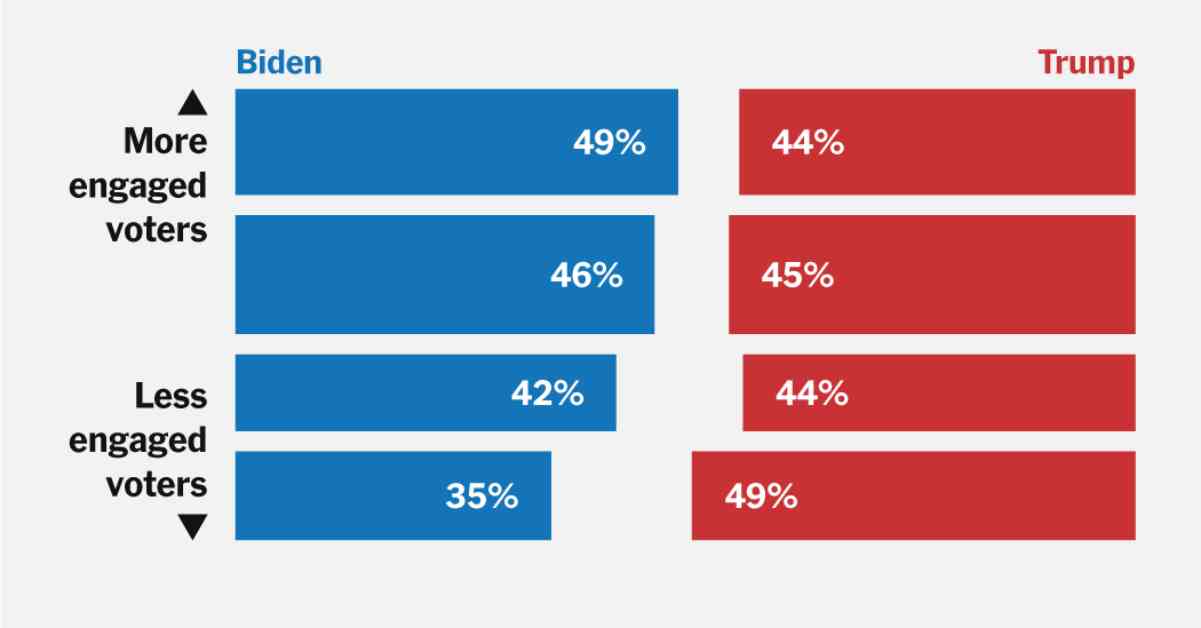How Republicans and Democrats Are Swapping Voter Turnout Strategies
In a surprising shift in American politics, it seems that Donald J. Trump, not President Biden, would actually benefit if every eligible voter in the country participated in the upcoming election. Recent polls from New York Times/Siena College indicate that Biden leads Trump among regular primary and midterm voters, but Trump holds an advantage among the rest of the electorate, giving him an edge among all registered voters.
This trend highlights how Trump’s brand of conservative populism has reshaped the political landscape. While his candidacy energized liberals to defend democracy and key issues like abortion rights, it also stirred disaffection among less engaged and infrequent voters who are disillusioned with Biden’s performance. These voters, who are not necessarily fans of Trump, are more focused on economic concerns and systemic change, showing less concern for democratic principles in the election.
This unique voter turnout dynamic is a major factor influencing the 2024 campaign. It explains the discrepancies between recent polls and election outcomes, as well as Trump’s increased support among demographics like young and nonwhite voters who traditionally have lower turnout rates. Both campaigns are grappling with the challenge of mobilizing irregular voters, as traditional strategies may not be as effective in this new landscape.
With just five months left until the election, there is still an opportunity for less engaged voters to reengage and potentially shift their support back to Biden. Many infrequent voters are not closely following the race yet, and their preferences are subject to change. While Trump currently holds an advantage among disengaged voters, the actual turnout of these individuals remains uncertain.
The insights are drawn from polls conducted by New York Times/Philadelphia Inquirer/Siena College in key battleground states like Pennsylvania, Michigan, Georgia, Arizona, Wisconsin, and Nevada. These findings underscore the evolving dynamics of voter behavior and the need for both campaigns to adapt their strategies accordingly.
As the election approaches, the interplay between voter turnout and candidate preferences will continue to shape the political landscape. The contrast between regular and irregular voters, as well as the factors influencing their decisions, will be critical in determining the outcome of the 2024 election. Both Republicans and Democrats are navigating this shifting terrain, seeking to mobilize their respective bases while also appealing to less engaged voters who could play a decisive role in the final results.




